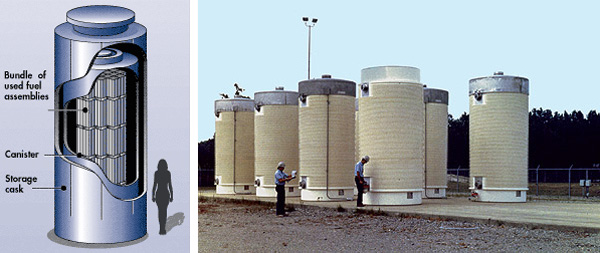Consumer Group Says Reactor Construction Proceeding Unlawfully
Petition Filed with Virginia State Corporation Commission

The utility Dominion Virginia Power, based in Richmond, is proceeding unlawfully with plans for the $19-billion-plus North Anna 3 electric power reactor and must get formal approval from the Virginia State Corporation Commission (VSCC) before it can continue, according to a petition filed August 30th with the Commission by the Virginia Citizens Consumer Council (VCCC), a nonprofit group based in Elliston.
The VCCC “Petition for a Declaratory Judgment” notes: “At an estimated total cost of at least $19.2 billion, North Anna 3 would be the most expensive power [reactor] ever built in the United States and could raise customers’ rates by 26 percent or more according to the Virginia Attorney General. While Dominion claims that North Anna 3 is needed for compliance with the federal Clean Power Plan, it would be far costlier than the low-carbon alternative of combined renewables, demand-side management, and efficiency … Dominion has not complied with Virginia law by failing to seek SCC approval before making expenditures on project development and beginning preliminary construction of North Anna 3.”
In Elliston, VCCC President Irene Leech said in a statement: “This is a huge raid on the pocketbooks of Virginia consumers and businesses. Dominion has spent approximately $600 million on project development and preliminary construction of North Anna 3, but has not yet sought or obtained Virginia State Corporation Commission approval for those expenditures. This is not a lawful or prudent way for Dominion to proceed when ratepayers are going to end up footing the bill. We’ve already seen ratepayers in this state stuck with a tab for over $300 million for the North Anna 3 project and there is no guarantee a reactor will ever be built or a single electron of power will be generated.”
In a formal declaration submitted in support of the VCCC petition, former Nuclear Regulatory Commission Commissioner Peter Bradford, who also served as chairman of both state utility regulatory agencies in New York and Maine and now is an adjunct professor at Vermont Law School, wrote: “The economic impact of North Anna 3 on Virginia will be immense. Dominion’s construction cost estimate of $19.2 billion dollars (including financing costs) for the proposed 1470 megawatt power reactor would be a commitment of about $2,400 for every citizen of Virginia, or $9,600 per family of four, and -- of course -- the impact is even greater because it is confined to Dominion customers.”
“Abysmally wasteful and unnecessary”
On July 12, 2016, Dr. Mark Cooper, senior fellow for economic analysis, Institute for Energy and the Environment at Vermont Law School, also submitted formal comments on behalf of VCCC. Dr. Cooper termed the North Anna 3 project “abysmally wasteful and unnecessary,” concluding that it would cost twice as much as solar to generate the same amount of energy, [and] fatten profits for shareholders by inflating Virginia ratepayer bills by up to 36 % (reflecting $6-12 billion in unnecessary costs).
In his analysis, Dr. Cooper concluded: “North Anna 3 is unreasonable, unnecessary, inefficient and wasteful and should be removed from Dominion’s Integrated Resource Plan. Dominion is incorrect in asserting that North Anna 3 is needed to satisfy the requirements of the (EPA) Clean Power Plan. To the contrary, a combination of renewables, demand side management, and efficiency can not only provide equivalent capacity, but also the same level of excess capacity.”
Dominion’s website says, “Dominion is a safe, world-class nuclear operator, and as part of its strategy to ensure adequate, reliable electricity for the future, the company is taking steps toward constructing a third nuclear generating unit adjacent to its existing two nuclear units at its North Anna Power Station in Louisa Co., Va.”
On Aug. 23, 2011, its North Anna complex -- 90 miles southwest of the White House -- was rocked by a 5.8-magnitude earthquake and shaken harder than its design specifications were built to handle. The quaking “violation” was the first of its kind in the 60-year-long history of US reactors, and came six months after the devastating earthquake/tsunami/triple meltdown in Fukushima, Japan. The Virginia quake moved 25 waste storage casks that weigh 115 tons each and hold highly radioactive waste uranium fuel rods from the two old reactors up to 4.5 inches.
So beyond being over budget, behind schedule, unnecessary and inefficient, Unit 3 wins the hair-raising boondoggle prize by being built on top of a minor earthquake fault.